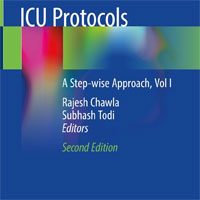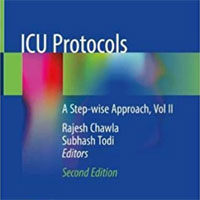Tag: resuscitation
Low-volume Resuscitation with Normal Saline is Associated with Microvascular Endothelial Dysfunction After Hemorrhage
Low-volume resuscitation with normal saline is associated with microvascular endothelial dysfunction after hemorrhage in rats, compared to colloids and balanced crystalloids. Resuscitation with NS failed to inhibit syndecan-1... read more
Detection of Pulmonary Embolism During Cardiac Arrest
The aim of this study was to test the hypothesis that the right ventricle is more dilated during resuscitation from cardiac arrest caused by pulmonary embolism, compared with hypoxia and primary arrhythmia. The right ventricle... read more
Sepsis E-alert System with Response Team Improves Outcomes
According to a new study, the use of a multifaceted intervention including an electronic sepsis alert (e-alert) system with sepsis response team was associated with improvement in care processes of sepsis and septic shock... read more
Defibrillator-carrying drones could save lives, research suggests
Drones are already employed for anything from military to recreational use, from oil exploration to film-making, but they could also help save the lives of people who have suffered a cardiac arrest, research suggests. A... read more
Malbrain Fluid Overload
Fluid overload is associated with increased morbidity and mortality. In this presentations an overview is given of the different definitions followed by a step-by-step description of the deleterious effects of fluid overload... read more
Volume responsiveness and volume tolerance: a conceptual diagram
So I know I've be-laboured the point about the difference between volume responsiveness (i.e. will there be significant increase in cardiac output with volume infusion) and volume tolerance (is the volume I am considering... read more
Improving CPR Performance
Cardiac arrest continues to represent a public health burden with most patients having dismal outcomes. Cardiopulmonary resuscitation (CPR) is a complex set of interventions requiring leadership, coordination, and best practices.... read more
The Impact of Neonatal Simulations on Trainees Stress and Performance
Neonatal simulations cause significant anticipatory and participatory stress. Despite this, trainees' performance score in simulation was over 80%. Simulated death did not impact performance, magnitude of rise in salivary... read more
PulsePoint Mobile App – Enabling Citizen Superheroes
PulsePoint Respond is an enterprise-class, software-as-a-service (SaaS) pre-arrival solution designed to support public safety agencies working to improve cardiac arrest survival rates through improved bystander performance... read more
Serial Procalcitonin Predicts Mortality in Severe Sepsis Patients
Objectives: To prospectively validate that the inability to decrease procalcitonin levels by more than 80% between baseline and day 4 is associated with increased 28-day all-cause mortality in a large sepsis patient population... read more
Fluid resuscitation in human sepsis: Time to rewrite history
Fluid resuscitation continues to be recommended as the first-line resuscitative therapy for all patients with severe sepsis and septic shock. The current acceptance of the therapy is based in part on long history and familiarity... read more
Venous congestion: are we adding insult to kidney injury in sepsis?
In critical illness, septic shock is a contributing factor in nearly half of all cases of acute kidney injury (AKI). Traditional approaches to prevention of organ dysfunction in early sepsis have focused on prevention of... read more
Pre-hospital therapeutic hypothermia: The RINSE trial
Therapeutic hypothermia has had a bit of a rollercoaster ride over the last few years. It was all the rage following three small trials, which initially suggested a significant benefit from cooling patients to 33C following... read more
Meta-analysis confirms EGDT for sepsis is unhelpful and wasteful (PRISM)
Three large, well-conducted randomized trials around the world (ProCESS, ARISE, and ProMISe) all agreed: use of early goal-directed therapy (EGDT) for sepsis does not improve mortality or any other important clinical outcome.... read more
The Sick and the Dead: Evidence-Based Trauma Resuscitation
The science of trauma resuscitation has undergone a fairly massive evolution in the past decade. This talk was our attempt to summarize the best-of-the-best in trauma literature from the past several years, and package it... read more
Quantifying the Mortality Impact of Do-Not-Resuscitate Orders in the ICU
Do-not-resuscitate status is an independent risk factor for ICU mortality. This may reflect severity of illness not captured by other clinical factors, but the perceptions of the treating team related to do-not-resuscitate... read more
Predicting and measuring fluid responsiveness with echocardiography
Echocardiography is an essential tool to predict and measure fluid responsiveness, according to a recent article, which provides a practical guide. Ashley Miller and Justin Mandeville outline the physiological basis of fluid... read more
Updated Guidelines for Sepsis Management
In 2017 the Society for Critical Care Medicine updated its guidelines for sepsis management. These new guidelines differ significantly from ones in the past in that they no longer recommend protocolized resuscitation and... read more
Excessive Resource Utilization
Overuse is inconsistent with professionalism because of the associated patient and societal harms and should receive equal attention as adverse events in health systems. Timely communication by inpatient specialists with... read more
A Primer on the Perils of Intravenous Fluids – Part 2
Critically-ill patients all likely have endothelial dysfunction to some degree. resuscitationThis perturbation in microvascular physiology may be underpinned by abnormal glycocalyx structure and function. Sepsis, trauma,... read more
Central Line Versus Peripheral IV Flow Rates In Resuscitation
The indications for central venous catheters (CVCs) include invasive hemodynamic monitoring, transvenous cardiac pacing, hemodialysis, lack of peripheral venous access, administration of vasopressors, nutritional support,... read more
Normal Saline as Resuscitation Fluid in Critically Ill
The study of Van Regenmortel et al. indirectly underscores growing equipoise in the expert medical community regarding the presumed harmful effects of NS compared with balanced crystalloids. Future studies, such as the ongoing... read more









